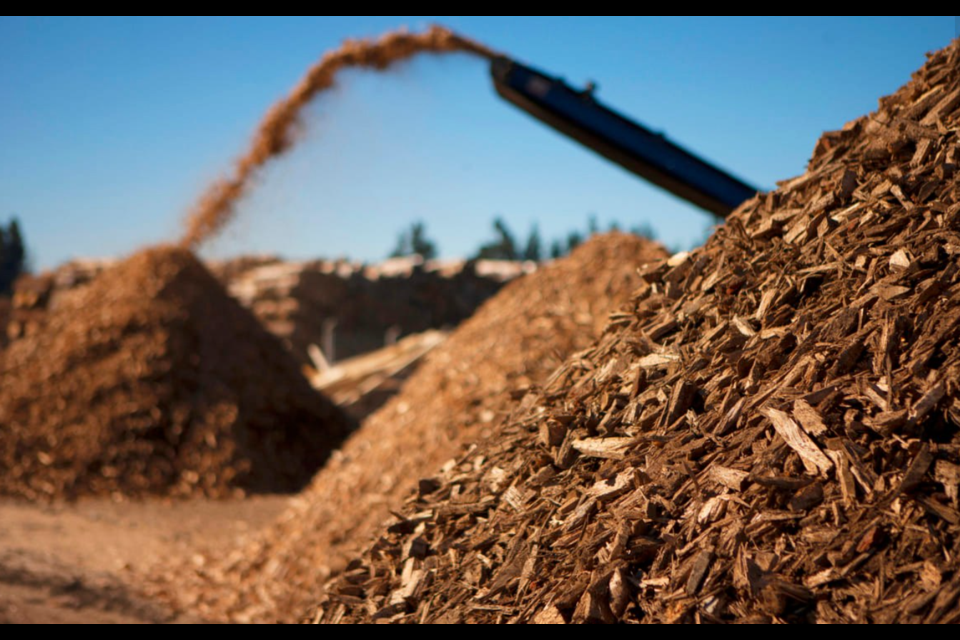Wood has been used to build and heat human structures for millennia.
Wood fibre can be milled and transformed into lumber, panels, and flooring used to build and furnish homes. It can be pulped to create papers, textiles, containerboard, food and beverage packaging, and tissue papers.
This sustainable and low-carbon fibre also contains a massive amount of green energy captured from the sun. Canadians are reminded of the enormous and sometimes devastating power when our forests ignite into wildfires.
Ontario’s forest sector has used this power to reduce reliance on carbon-emitting fossil fuels and lower costs.
For decades, biomass has been used to heat kilns that dry lumber. Biomass is used to create steam that drives turbines to produce electricity both on the mill site and to local grids, supporting circular economies. Through initiatives like Ontario’s Forest Sector Strategy, Forest Biomass Program and Forest Biomass Action Plan, the forest sector finds itself in its next evolution, transforming into an energy powerhouse to meet new demands.
On Oct. 16, Ontario’s Independent Electricity System Operator (IESO) revised its forecast for electricity demand, saying demand is expected to soar 75 per cent by 2050.
Personal and fleet electric vehicles, public transit electrification, battery manufacturing, data centres, and population growth will drive new electricity demand. In response, Ontario is about to deliver on its largest ever competitive energy procurement. Long-Term RFP 2 (LT2) will procure up to 5,000 megawatts (MW) of energy and feature 20-year contracts.
Currently, nuclear provides 53 per cent of Ontario’s electricity, followed by hydroelectric (25 per cent), gas/oil (13 per cent), wind (8 per cent), and solar (0.5 per cent).
Forest biomass contributes only 0.3 per cent.
Ontario’s forest product sector competes directly with jurisdictions that have a much higher percentage of biofuel and biomass in their electricity mix, such as the U.S. states of Georgia (3.9 per cent) and Maine (13.7 per cent), and the countries of Sweden (5.4 per cent), Germany (7.1 per cent), and Finland (16.5 per cent).
Through bilateral agreements and competitive procurements, Ontario must set a new, long-term forest biomass generation target in line with our competition to provide more stability and attract investment into the sector.
Ontario’s electrical grid is very clean, one of the cleanest in the world. About 90 per cent of electricity is produced from non-carbon emitting sources.
However, electricity is only 20 per cent of the energy consumed in Ontario. Eighty per cent of Ontario’s energy use comes from petroleum products, natural gas, and coal, the fuels of choice for heavy industry, residential heating, and transportation.
The forest sector has a made-in-Ontario, low-carbon, drop-in replacement for each of these emitting fuels, including biochar, syngas, renewable natural gas, green hydrogen, biocrude, biodiesel, renewable diesel, and sustainable aviation fuels.
Heating is 27 per cent of Ontario’s energy demand. Combined heat and power and district energy systems are used extensively in Europe.
For example, approximately 50 per cent of Finland’s population is served by district energy. KVV8 in Stockholm can heat 190,000 homes and produce 750 GWh of electricity, fuelled entirely by wood chips.
The estimated carbon reduction of this facility is 650,000 tonnes CO2 per year. This can be replicated in Ontario, where cities like Toronto are struggling to find non-emitting sources of electricity that will meet projected growth.
Bioheat can be modular and scaled to fit the specific application, whether it's for a single residential building or for local projects that provide heat to a few public or institutional buildings. In Vermont, one in eight households rely on wood for heat, and over one-third of Vermont children attend schools that are heated by wood.
Successful management of Ontario’s 28 million hectares of managed productive forest and the carbon emissions from wildfires are tied directly to the success of the forest industry.
Advancing forest bioenergy projects will help create a circular economy, improve waste diversion, provide Ontario-made solid wood products for housing needs, reduce carbon emissions in the heavy industry, heating, and transportation sectors, and stimulate economic growth and prosperity across all areas of Ontario.
By setting targets and prioritizing forest bioenergy projects, Ontario can not only enhance the sustainability of its forest resources but also pave the way for a resilient and prosperous future for its communities and the environment.




